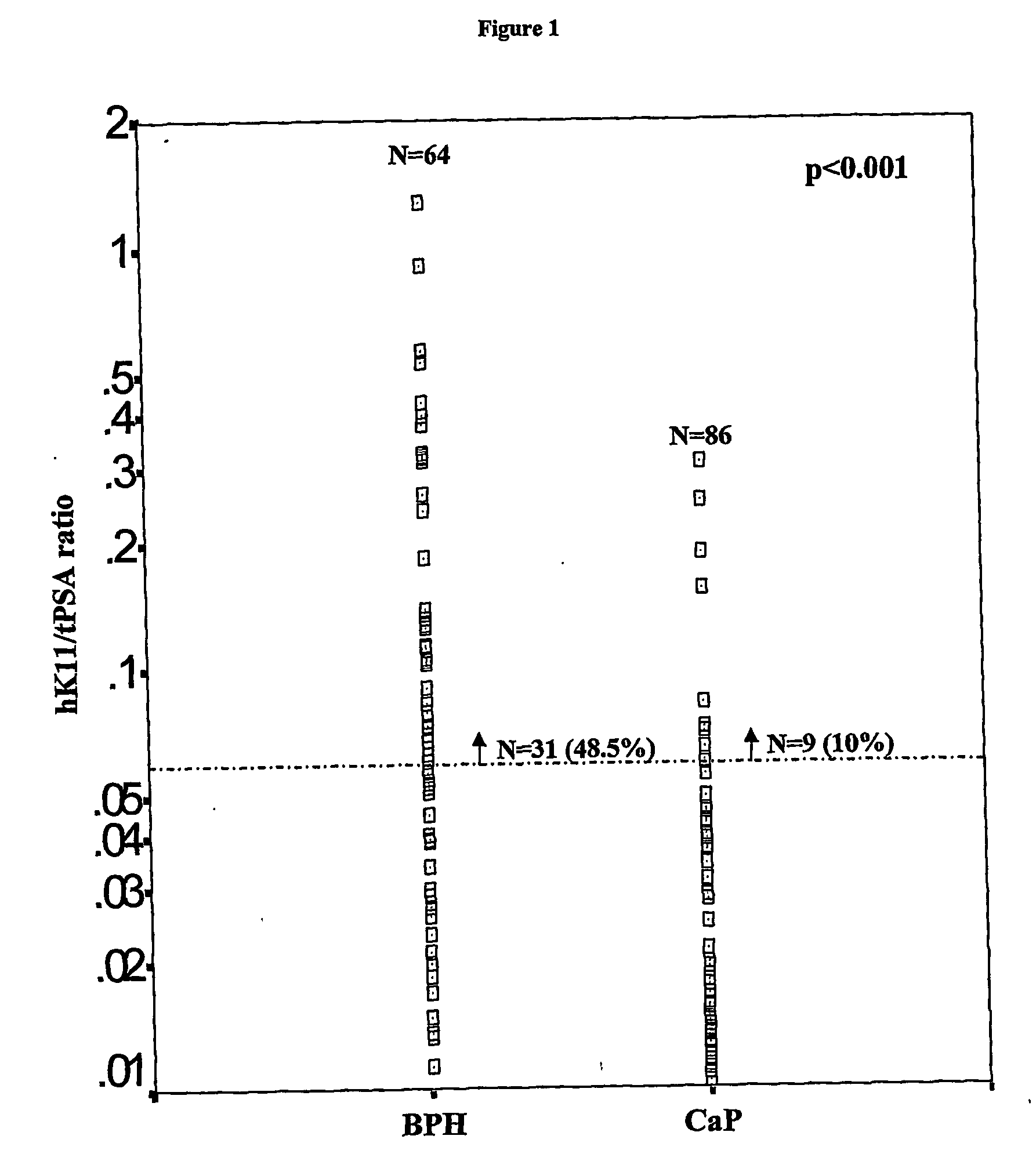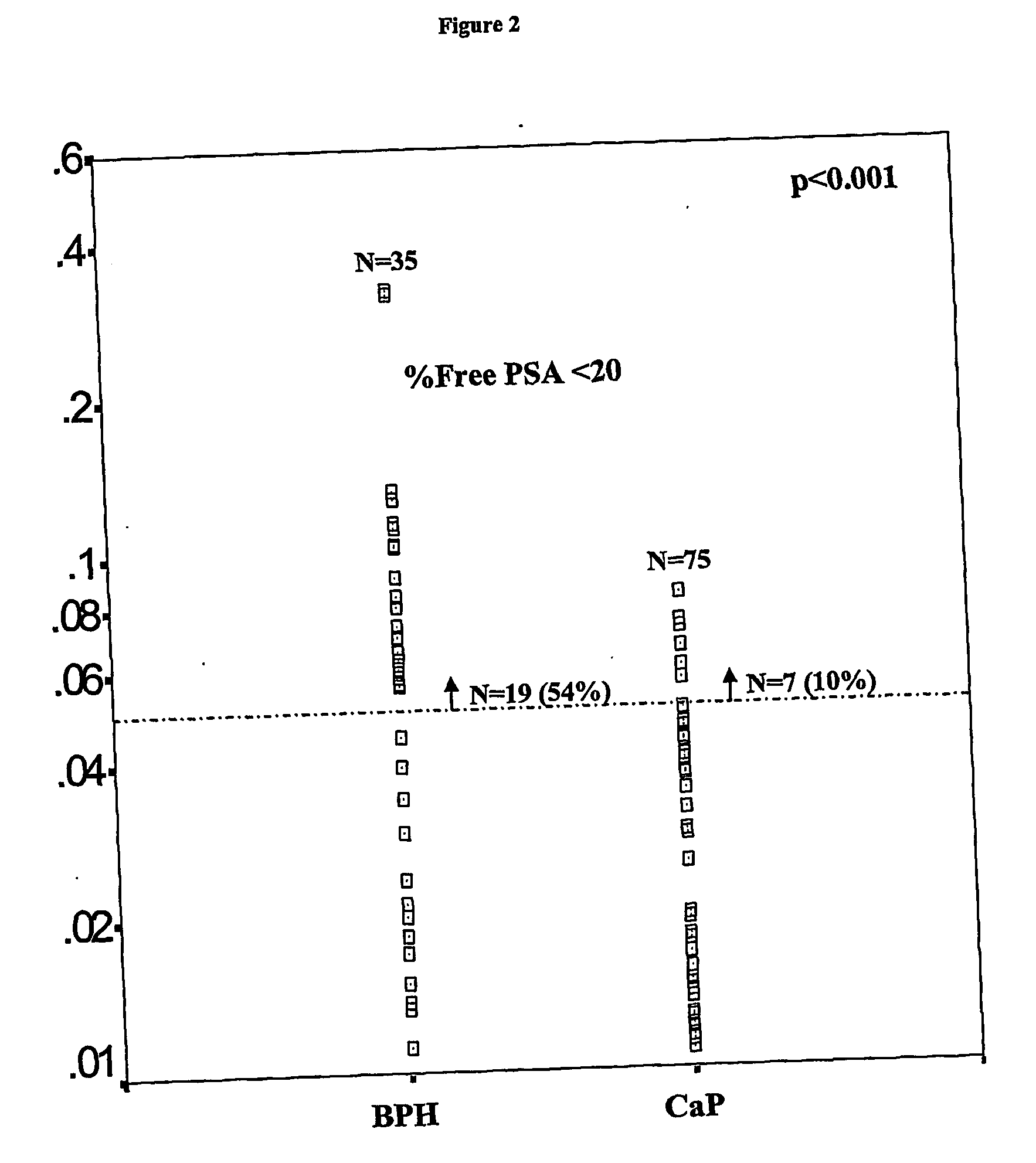Methods for detecting prostate cancer
a prostate cancer and antigen technology, applied in the field of kallikrein 11, can solve the problems of high frequency of false negative and false positive results, complicating the diagnosis of prostate cancer by psa alone, etc., and achieve the effect of improving the accuracy of a diagnosis of prostate cancer
- Summary
- Abstract
- Description
- Claims
- Application Information
AI Technical Summary
Benefits of technology
Problems solved by technology
Method used
Image
Examples
example 1
[0216] hK11, total PSA and % free PSA, was analyzed in a total of 150 serum samples from men with histologically confirmed benign prostatic hyperplasia (BPH; N=64) or prostatic cancer (CaP; N=86). Total and free PSA levels were measured by the Immulite PSA assay and hK11 levels were measured by an immunofluorometric assay. Serum hK11 levels and the hK11 / total PSA ratio were both significantly lower in CaP patients than in BPH. In the subgroup of patients with % free PSA less than 20, an additional 54% of BPH patients could have avoided biopsies using the hK11 / total PSA ratio. ROC curve analysis demonstrated that the hK11 / total PSA ratio (AUC=0.81) and % free PSA (AUC=0.82) were much stronger predictors of prostate cancer than total PSA (AUC=0.69). Thus, the hK11 / total PSA ratio is a useful tumor marker for prostate cancer and may be combined with % free PSA to further significantly reduce the number of unnecessary prostatic biopsies.
Materials and Methods
Study Population
[0217] I...
example 2
[0231] Human kallikrein 11, total PSA, and % free PSA were analyzed using the procedure described in Example 1 in serum samples from 405 male patients, 247 with benign prostatic hyperplasia (median age 66) and 157 with prostate cancer (median age 64), histologically confirmed by biopsy in all cases. Descriptive statistics are described in Table 3. The logistic regression analysis of BPH and CaP patients for predicting the presence of prostate cancer is shown in Table 4. A comparison of the sensitivity and specificity at selected cut-off points of the study variables is shown in Table 5, and a comparison of the sensitivity and specificity at selected cut-off points in subgoups according to total PSA value is shown in Table 6. Table 7 shows serum hK11 concentration classified by tumor grade, stage of disease, and Gleasson score.
[0232] A positive correlation was found between hK11 and patient age in the group of patients with benign prostatic hyperplasia (Spearman correlation coeffici...
PUM
 Login to View More
Login to View More Abstract
Description
Claims
Application Information
 Login to View More
Login to View More - R&D
- Intellectual Property
- Life Sciences
- Materials
- Tech Scout
- Unparalleled Data Quality
- Higher Quality Content
- 60% Fewer Hallucinations
Browse by: Latest US Patents, China's latest patents, Technical Efficacy Thesaurus, Application Domain, Technology Topic, Popular Technical Reports.
© 2025 PatSnap. All rights reserved.Legal|Privacy policy|Modern Slavery Act Transparency Statement|Sitemap|About US| Contact US: help@patsnap.com



